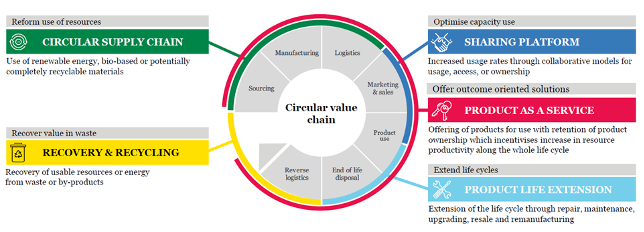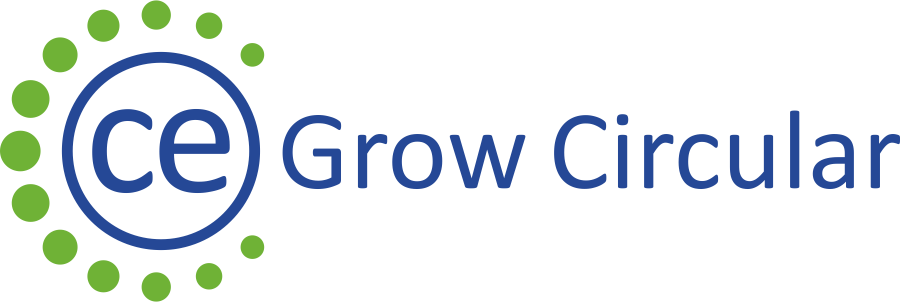Accenture has developed a model identifying five main business models: Circular Supply Chain (reformed use of resources), Sharing Platform (optimise capacity use), Product as a Service (offer outcome-oriented solutions), Product Life Extension (extend life cycles) and Recovery & Recycling (recover value in waste).

- Circular Supply-Chain
When a company needs resources that are scarce or environmentally destructive, it can either pay more or find alternative resources. The Circular Supply-Chain introduces fully renewable, recyclable or biodegradable materials that can be used in consecutive lifecycles to reduce costs and increase predictability and control.
- Recovery & Recycling
The Recovery & Recycling model creates production and consumption systems in which everything that used to be considered waste is revived for other uses. Companies either recover end-of-life products to recapture and reuse valuable material, energy and components or they reclaim waste and by-products from a production process.
- Product Life-Extension
Consumers discard products they no longer value—because the products are broken, out of fashion or no longer needed. But many of these products still hold considerable value, and the Product Life-Extension model seeks to recapture it. By maintaining and improving products through repairs, upgrades, remanufacturing or remarketing, companies can keep them economically useful for as long as possible.
This means shifting from merely selling things to actively keeping them alive and relevant. It also means moving customers from transactions to relationships, tailoring upgrades and alterations to specific needs.
- Sharing Platform
The Sharing Platform model—increasingly assisted by new forms of digital technology—forges new relationships and business opportunities for consumers, companies and micro-entrepreneurs, who rent, share, swap or lend their idle goods. Fewer resources go into making products that are infrequently used, and consumers have a new way to both make and save money.
- Product as a Service
If manufacturers and retailers would have to bear the “total cost of ownership”, many would immediately adjust their focus to longevity, reliability and reusability. When consumers lease or pay for products by use through the Product as a Service model, the business model fundamentally shifts—in a good way. Performance trumps volume, durability tops disposability, and companies have an opportunity to build new relationships with consumers.



